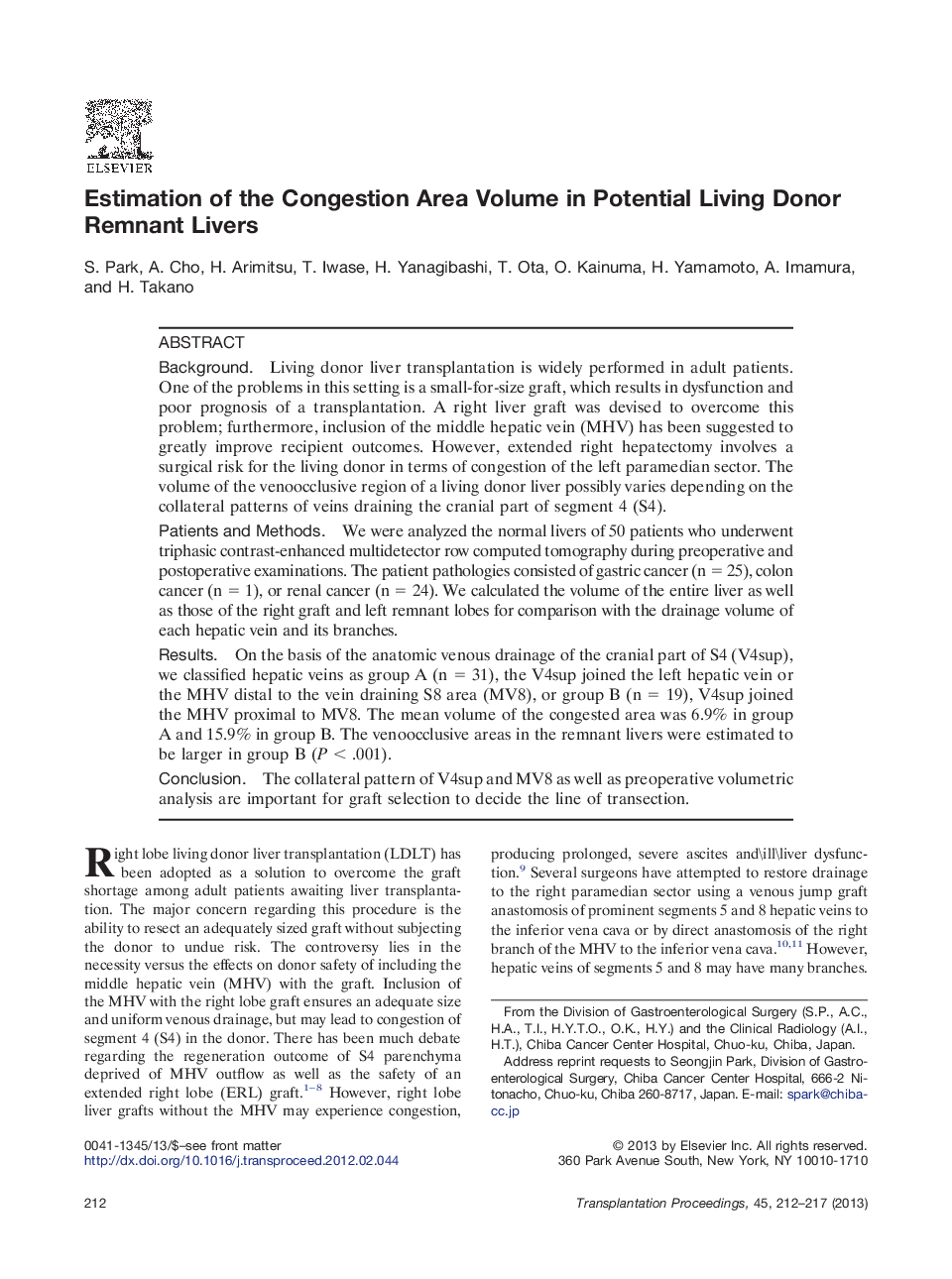| Article ID | Journal | Published Year | Pages | File Type |
|---|---|---|---|---|
| 4257093 | Transplantation Proceedings | 2013 | 6 Pages |
BackgroundLiving donor liver transplantation is widely performed in adult patients. One of the problems in this setting is a small-for-size graft, which results in dysfunction and poor prognosis of a transplantation. A right liver graft was devised to overcome this problem; furthermore, inclusion of the middle hepatic vein (MHV) has been suggested to greatly improve recipient outcomes. However, extended right hepatectomy involves a surgical risk for the living donor in terms of congestion of the left paramedian sector. The volume of the venoocclusive region of a living donor liver possibly varies depending on the collateral patterns of veins draining the cranial part of segment 4 (S4).Patients and MethodsWe were analyzed the normal livers of 50 patients who underwent triphasic contrast-enhanced multidetector row computed tomography during preoperative and postoperative examinations. The patient pathologies consisted of gastric cancer (n = 25), colon cancer (n = 1), or renal cancer (n = 24). We calculated the volume of the entire liver as well as those of the right graft and left remnant lobes for comparison with the drainage volume of each hepatic vein and its branches.ResultsOn the basis of the anatomic venous drainage of the cranial part of S4 (V4sup), we classified hepatic veins as group A (n = 31), the V4sup joined the left hepatic vein or the MHV distal to the vein draining S8 area (MV8), or group B (n = 19), V4sup joined the MHV proximal to MV8. The mean volume of the congested area was 6.9% in group A and 15.9% in group B. The venoocclusive areas in the remnant livers were estimated to be larger in group B (P < .001).ConclusionThe collateral pattern of V4sup and MV8 as well as preoperative volumetric analysis are important for graft selection to decide the line of transection.
